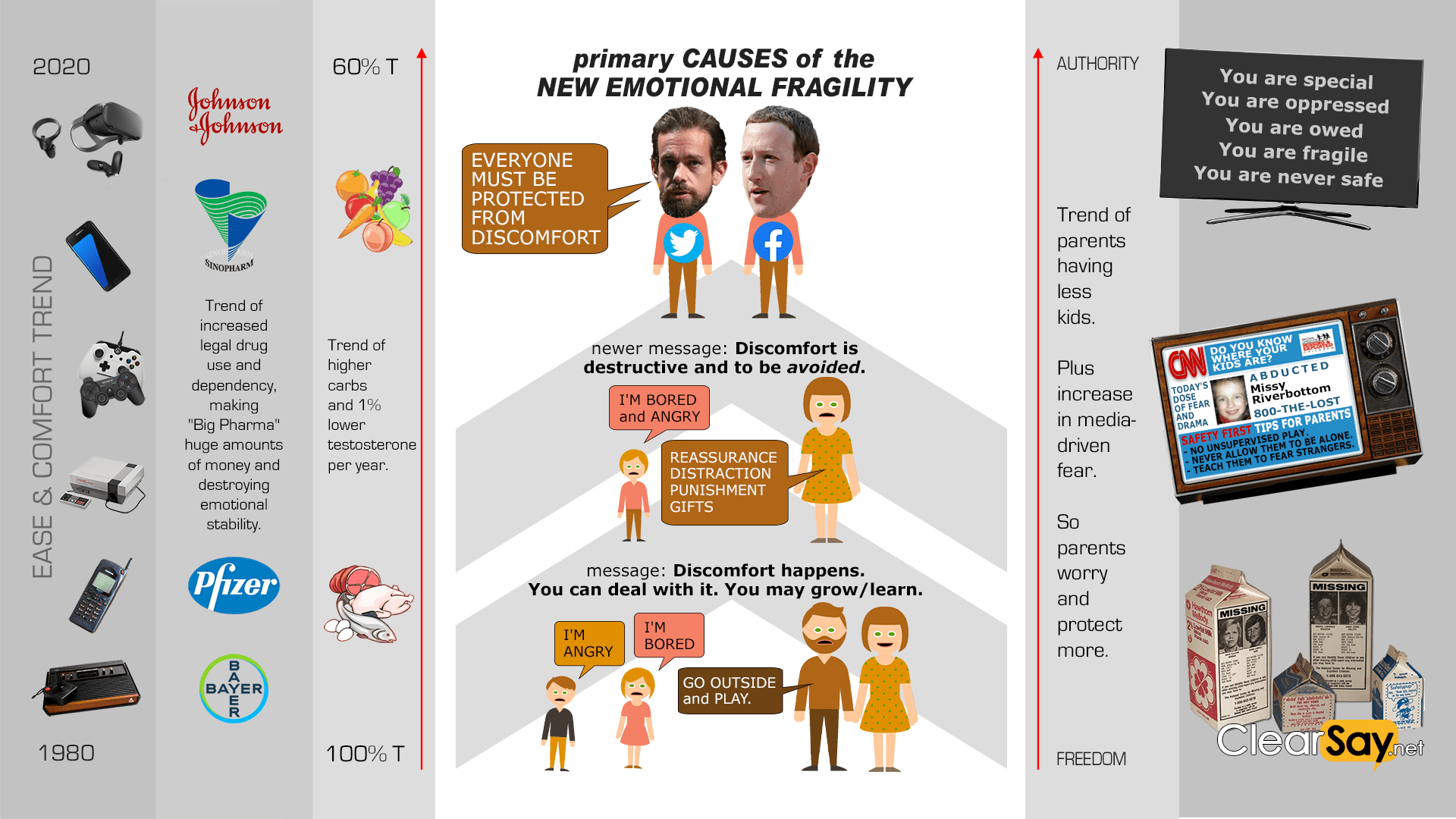Are Kids Getting Enough Hardship Inoculation & Empathy? - ClearSay
I’ve noticed a pattern; an increase in emotional fragility in children and now, adults. How is this happening? The short and simple answer: “Bubble-wrapped children”.
Most parents care about their children and justifiably want happiness for them.
Unfortunately, these caring parents may not realize the benefits of allowing their children to experience hardship may often outweigh the pain or potential risk involved in the “hard” or “boring” or “dangerous” activity.
Notice how the mom in the video below gently, yet firmly works with your child to attempt to get both their needs met?
Here’s an easy experiment you can try
When a child has the physical and mental capability to do something for themselves, and they come to you asking for help they don’t really need, put aside your need to nurture or guide and (gently, if necessary) insist they do the thing.
“I hear you. It’s easier if I do it for you. I wonder how much more powerful you will be when you can do this yourself?”
Of course, you will weigh the risks! I’m not advising you to put your child in danger. The point here is not to harm or cause pain to your children. The point is to allow them to experience the natural consequences of the world around them so they grow up to be people who rise to a challenge, rather than shirk away in fear. And bonus: less work for you as a parent.
Not authoritarian or permissive
What I’m recommending is neither “permissive parenting” or “authoritarian parenting”. It’s part of a growing movement called “peaceful parenting” where we acknowledge that interference, especially coercion, comes with a price.
Note: The “system” we base this article on is called Practical Empathy (PEQ) developed by Scott Swain after fifteen years of studying Nonviolent Communication (NVC) by Marshall Rosenberg, PhD.
Like most parents, we prefer our children grow up to be people who are peaceful, resourceful, responsible, powerful, and empathetic. So we, as examples, embody these traits for our children to see and experience as they grow up.
Now many parents who are not studied up on peaceful parenting might say, “But I do all that!” Oh? Let’s see.
Do you consider it peaceful to force a child to wear what you think is best for them to wear, rather than allow them to be responsible for their own choices and experience the natural consequences lesson of learning that indeed that clothing they chose earned them discomfort throughout their day? This is a battle you can, at an appropriate age, of course, choose to let go of.

But what’s the harm?
Here’s an image that hopefully answers that question. If this image is confusing for you, start in the middle, at the bottom. Notice the family there and the take-away “message” given to their children? This is a generalized example of a pre-90’s family. As time moves on, the family size shrinks because parents are having less kids and fathers are sticking around less often.

Now let’s talk solutions
Which of the following is a more empathetic response to the child?
“Mommy, the things that boy said to me hurt my feelings!”
(a) “That boy was wrong. He’s mean. Ignore him!”
(b) “Oh my sweet baby! Let’s get you some ice cream and a toy!”
(c) “Don’t be a wimp. Hurt him back!”
(d) “Are you sad because it hurts to hear things like that and you want more consideration for your feelings?”
AFTER empathy for your child, maybe even progressing to encouraging empathy for others with something like, “I wonder why that boy is hurting so much he says things like that to other people?”
Which of the above methods jumps straight to “fixing,” “solution,” “distraction,” “reward,” and/or “us vs. them” programming and which gives empathy?
Going a bit deeper: Look again at the empathetic approach. It’s conveying some powerful messages such as, “You are responsible for your feelings” (empowering the child) and “His actions come from his experiences.” Also important: We are not assigning blame or responsibility here, though PEQ-type empathy often tends to at least point out where responsibility is.
In a nutshell: Get in the habit of asking yourself, “Does this situation offer an opportunity to become a lesson in natural consequences or empathy?”
Credit to Becky Bailey’s Conscious Discipline system for the idea of natural consequences. Not necessarily a new thing in the parenting world but it was new to me when I discovered it and I’ve found much use in the practice. In 2013, a daycare in Austin (Children’s Discovery Center) required me to learn her system before I could train the teachers and kids there in use of PEQ.
Want more? Check out these articles
NOTE: The above articles are in queue to be moved to this site, so please excuse the mess.
Some books I recommend on this topic
Nonviolent Communication by Marshall Rosenberg
Practical Empathy by Scott Swain (book coming out soon)
Easy To Love, Difficult to Discipline: The 7 Basic Skills for Turning Conflict by Becky Bailey
Conscious Discipline: 7 Basic Skills for Brain Smart Classroom Management by Becky Bailey
Everything Voluntary from Politics to Parenting by Skyler Collins
Punished by Rewards by Alfie Kohn
How Children Learn by John Holt